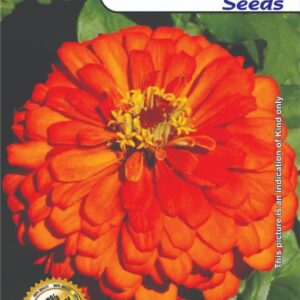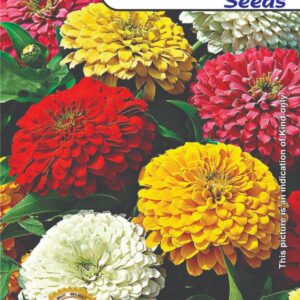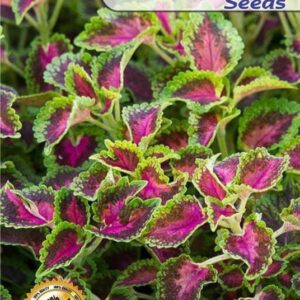Yellow zinnias can bring a bright and cheerful vibe to your garden. Growing them is quite similar to other zinnia varieties. Here’s a guide on how to grow yellow zinnias:
Growing Conditions:
- Sunlight:
- Zinnias thrive in full sunlight. Provide them with at least 6 to 8 hours of direct sunlight daily for optimal growth and abundant flowering.
- Soil:
- Zinnias are adaptable to various soil types but prefer well-draining soil. A moderately fertile, loamy soil is ideal. Good drainage helps prevent root rot.
- Watering:
- Keep the soil consistently moist, especially during dry periods. Water at the base of the plants to prevent wetting the foliage, which can contribute to fungal diseases. Once established, zinnias exhibit some drought tolerance, but it’s essential not to let the soil dry out completely.
- Temperature:
- Zinnias are warm-season plants. They prefer temperatures between 70-90°F (21-32°C) and are sensitive to frost. Plant them after the last expected frost date in your region.
Planting and Propagation:
- Seeds:
- Zinnias are commonly grown from seeds. Directly sow the seeds into the garden after the danger of frost has passed. Press the seeds lightly into the soil, as they need light for germination. Keep the soil consistently moist until the seeds sprout.
- Transplanting:
- Alternatively, start zinnia seeds indoors 4-6 weeks before the last expected frost. Transplant the seedlings into the garden after the soil has warmed.
Care Tips:
- Deadheading:
- Regularly deadhead faded flowers to encourage continuous blooming. This not only maintains a tidy appearance but also prevents the plant from directing energy toward seed production.
- Fertilizing:
- While not heavy feeders, zinnias benefit from a balanced fertilizer applied at planting time. Avoid excessive nitrogen, as it may result in more foliage and fewer flowers.
- Spacing:
- Provide adequate spacing between zinnia plants to allow for good air circulation. Proper spacing helps prevent issues such as powdery mildew.
- Pests and Diseases:
- Keep an eye out for common pests like aphids and spider mites. Treat any infestations promptly with insecticidal soap or neem oil. Adequate spacing and good air circulation also help prevent fungal diseases.
Varieties:
- Some popular yellow zinnia varieties include ‘Profusion Yellow,’ ‘Canary Bird,’ and ‘Zinderella Yellow.’ Choose a variety based on your preferences for flower shape and size.
Zinnias are versatile and can be used in garden borders, containers, and cutting gardens. They attract pollinators like butterflies and bees, contributing to a lively and colorful garden. With proper care, you can enjoy a profusion of yellow blooms from your zinnia plants throughout the growing season.















by vorbelutrioperbir
Great write-up, I am regular visitor of one’s site, maintain up the nice operate, and It is going to be a regular visitor for a lengthy time.
by zoritoler imol
I wanted to thank you for this great read!! I definitely enjoying every little bit of it I have you bookmarked to check out new stuff you post…
by tlover tonet
I was very happy to seek out this web-site.I wanted to thanks for your time for this glorious read!! I undoubtedly having fun with each little bit of it and I’ve you bookmarked to take a look at new stuff you weblog post.
by vorbelutr ioperbir
Very interesting topic, appreciate it for putting up.